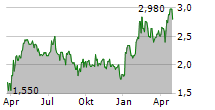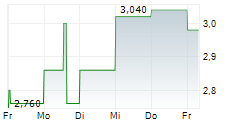VANCOUVER, BRITISH COLUMBIA / ACCESS Newswire / August 14, 2025 / Mako Mining Corp. (TSXV:MKO)(OTCQX:MAKOF) ("Mako" or the "Company") is pleased to report additional results from the 2025 reverse circulation ("RC") and diamond drill program at the El Golfo area within the El Jicaro Concession located immediately south of the company's 100% owned Las Conchitas and San Albino Gold deposits in Nicaragua, which are currently being mined by the Company (refer to Figure 1).
Forthe first time in modern history, drilling has commenced in the El Golfo area. The drill program was initially designed for 3,000 metres (m) of RC drilling. It has since been expanded to 6,500 m of combined RC and diamond drilling in response to encouraging drill results, including the Discovery Hole EJ25-RC53 which intersected 39.15 grams per tonne ("g/t") gold ("Au") and 27.9 g/t silver ("Ag") over 5.9 m (Estimated True Width ("ETW"), 19.2 m below surface (see Press Release dated May 21st, 2025).
Highlights
EJ25-07
197.80 g/t Au and 349.0 g/t Ag over 0.70 m (ETW)
EJ25-RC54
27.86 g/t Au and 2.1 g/t Ag over 4.00 m (ETW)
EJ25-14 intersected two mineralized intervals
8.79 g/t Au and 6.6 g/t Ag over 2.50 m (2.20 m ETW)
37.96 g/t Au and 11.7 g/t Ag over 2.70 m (2.40 m ETW)
EJ25-RC61
77.70 g/t Au and 76.0 g/t Ag over 1.00 m (0.90 m ETW)
EJ25-RC65
44.10 g/t Au and 45.6 g/t Ag over 1.00 m (ETW)
EJ25-RC86
11.61 g/t Au and 26.1 g/t Ag over 4.00 m (3.80 m ETW)
Akiba Leisman, CEO of Mako states "we announced the Discovery Hole at El Golfo in May, where we intersected a shallow intercept of over 39 g/t Au over nearly 6 meters Estimated True Width and within 20 meters from surface. This hole was only the second hole that was ever drilled at El Golfo, and therefore Mako did not have enough information to meet the minimum criteria to declare a Discovery at the time. Since May, follow up holes at El Golfo not only confirm the Discovery, but it is starting to define a relatively large footprint that can be measured in hundreds of meters in dip potential with strike trends measured over multiple kilometers. We will be following up on these results with a much more aggressive drill program, and if successful, eventually incorporate the El Golfo area into our mine plan."
The main objective of the 2025 drilling campaign in the El Golfo area is to test the high-grade mineralization trends outlined by geochemical soil surveys, geological mapping, prospecting and limited trenching. Numerous historical workings including adits, mine dumps and more recent artisanal surface workings (pits) were mapped and sampled. In total, four linear anomalous trends have been outlined, oriented in a northeast-southwest direction. Two of these trends, with lengths over 1,000 meters, appear to be a continuation of the gold geochemical anomalies over 1 kilometre away at the Las Conchitas area, which is currently being mined by the Company.
The initial drilling comprising 3,000 m of RC drilling successfully tested a conceptual model for the El Golfo mineralization. This model consists of multiple subparallel gold bearing quartz veins with a northeast-southwest strike and a gentle northwest dip. The veins are hosted by broadly uniform host rocks, consisting of deformed carbonaceous schists similar to those being mined by Mako. The Company has initiated an additional 3,500 m diamond drill program aiming to better define the geometry and extent of mineralization. Further drilling may be needed to confirm the grade and distribution of mineralization.
Drill hole EJ25-RC54 intersected a wide, high-grade interval (refer to Table 1) of 27.86 g/t Au and 2.1 g/t Ag over 4.0 m (ETW), 20 m below surface, and confirmed a 21.0 m down-dip extension of the gold mineralization intersected by RC drill hole EJ25-RC53 of 39.15 g/t Au and 27.8 g/t Ag over 8.0 m (5.9 m ETW), 19.2 m below surface (see Press Release dated May 21, 2025). Both drill holes tested a prominent NE-SW oriented structure interpreted as the Pavona vein.
Diamond drill hole EJ25-07 successfully intersected four zones of mineralization highlighted by the lowest zone at 153 m below surface which graded 197.80 g/t Au and 349.0 g/t Ag over 0.70 m (ETW). This intersection is considered to be significant since it is interpreted to represent a 345 m down-dip extension of mineralization intersected by the Discovery Hole EJ25-RC53 mentioned above. Results justify additional drilling to initiate an assessment of the potential of the mineralized veins in the area (refer to Figure 2).
EJ25-14 intersected two mineralized intervals close to surface, 8.79 g/t Au and 6.6 g/t Ag over 2.50 m (2.2 m ETW) and 37.96 g/t Au and 11.7 g/t Ag over 2.70 m (2.4 m ETW), 7.2 m and 11.6 m below surface respectively. This hole tested an 18 m SW strike extension of the high-grade mineralization intersected by the Discovery Hole EJ25-RC53 and successfully confirmed the conceptual model for this area defined by multiple gold bearing veins close to the surface (refer to Table 2).
Both EJ25-RC61 and EJ25-RC62 intersected shallow, high-grade intervals at 78 m and 51 m below surface, respectively. EJ25-RC61 intersected 77.70 g/t Au and 76.0 g/t Ag over 1.00 m (0.9 m ETW) and EJ25-RC62 intersected 17.90 g/t Au and 28.7 g/t Ag over 1.00 m (ETW). These holes successfully tested the potential for additional mineralized structures below previously identified mineralization. Additional drilling is required to test the full potential of this mineralized structure.
Drill hole EJ25-RC65 intersected 44.10 g/t Au and 45.6 g/t Ag over 1.00 m, confirming a 31 m SW strike extension of the mineralization intersected by EJ25-RC54,
EJ25-RC86 intersected 11.61 g/t Au and 26.1 g/t Ag over 4.00 m (3.8 m ETW) and confirmed a 105 m down-dip extension of the mineralization intercepted in EJ25-RC65, described above.
Table 1 - Assay Results of RC Drill Holes Reported in This Press Release
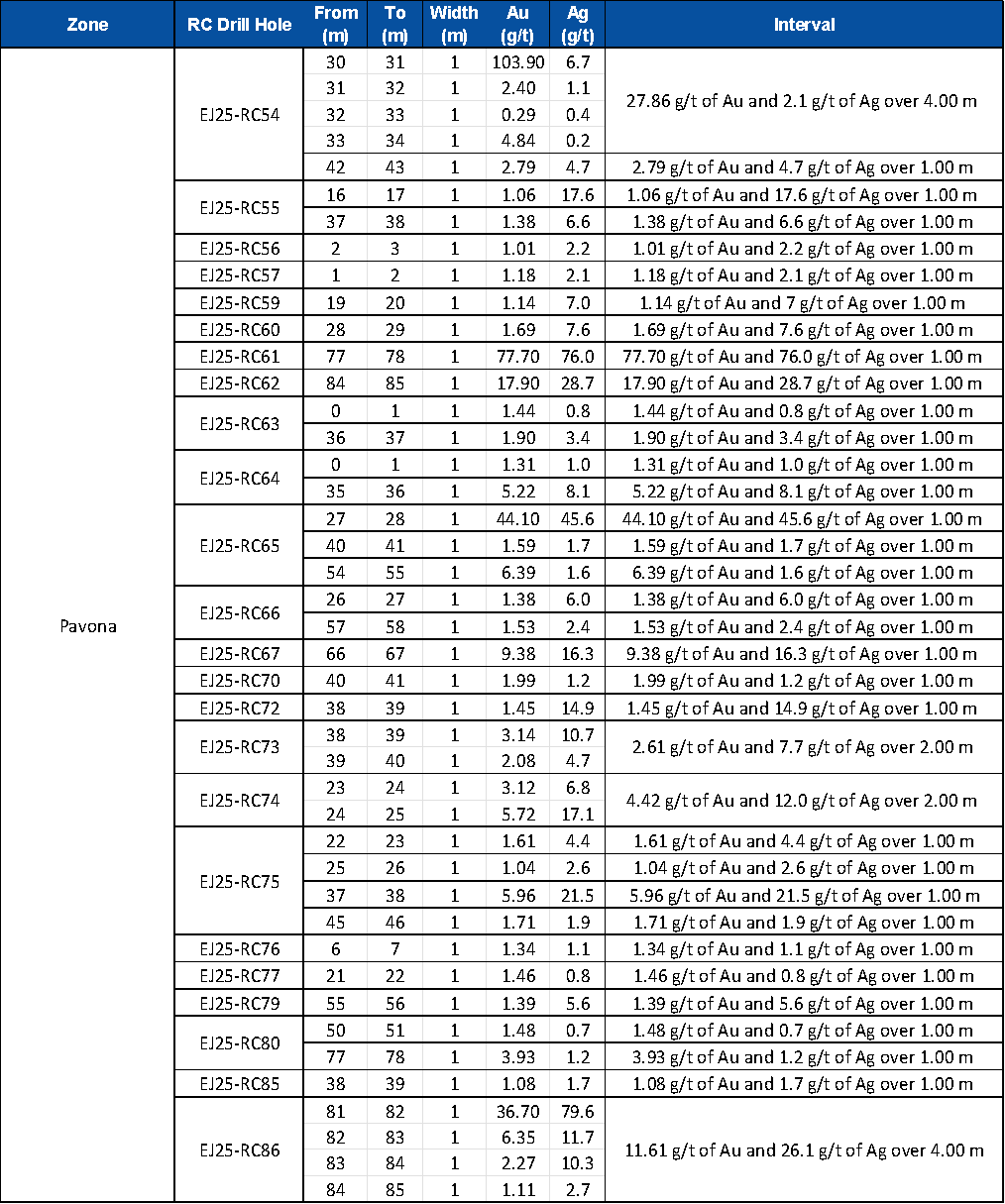
Table 2 - Assay Results of Diamond Drill Holes Reported in This Press Release
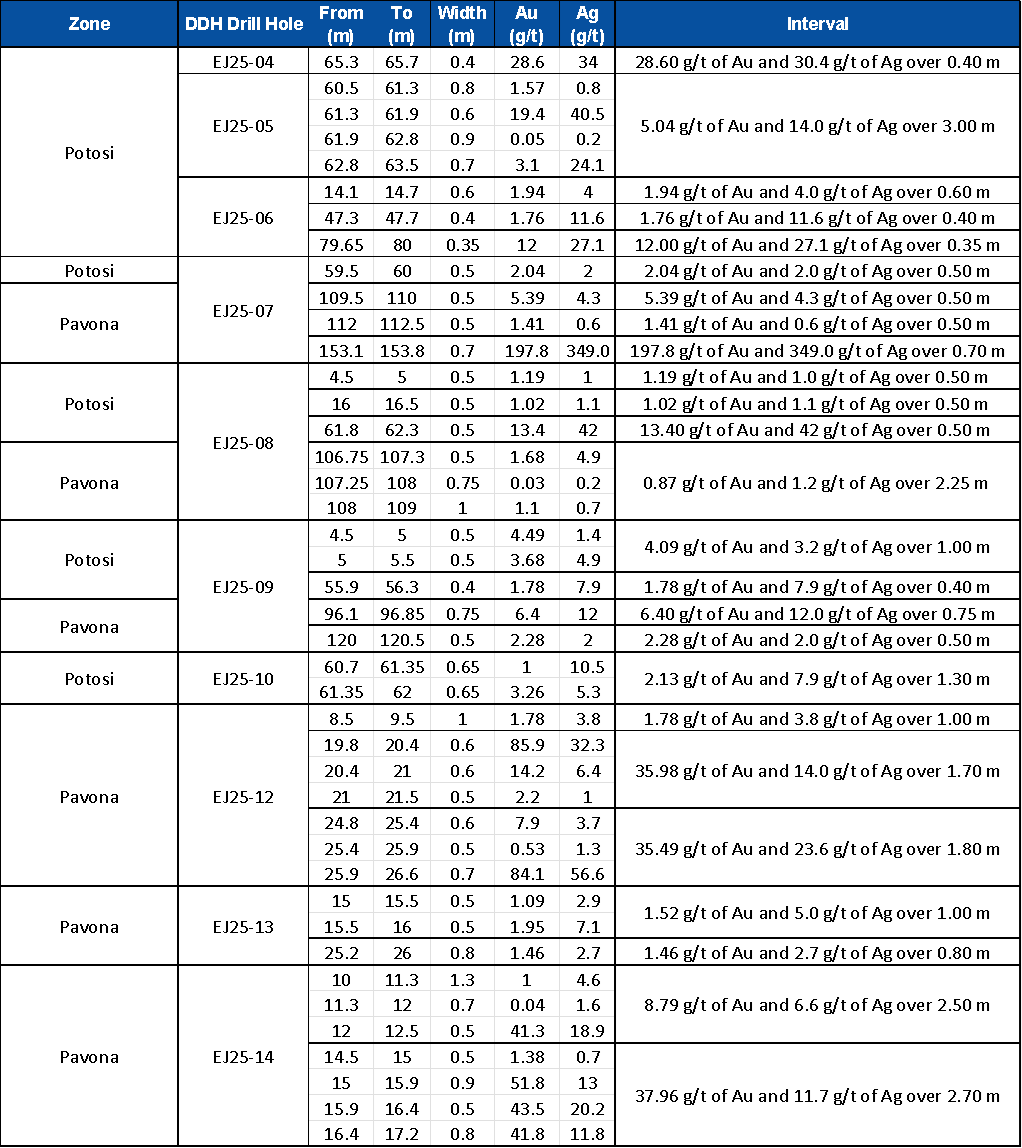
Note: The mineralized intervals shown in both tables above utilize a 1.0 g/t gold cut-off grade with not more than 1.0 m of internal dilution. *Widths are reported as drill lengths. **Estimated True Width is estimated from interpreted sections. In addition to the drill holes presented in the tables above, the following drill holes returned only anomalous values: EJ25-RC58, EJ25-RC68, EJ25-RC69, EJ25-RC78, EJ25-RC81, EJ25-RC83, EJ25-RC84, EJ25-RC87 and EJ25-RC88. In addition to the drill holes presented in the tables above the following drill holes returned no significant values: EJ25-RC71 and EJ25-RC82.
Figure 1. Drill Hole Plan El Golfo
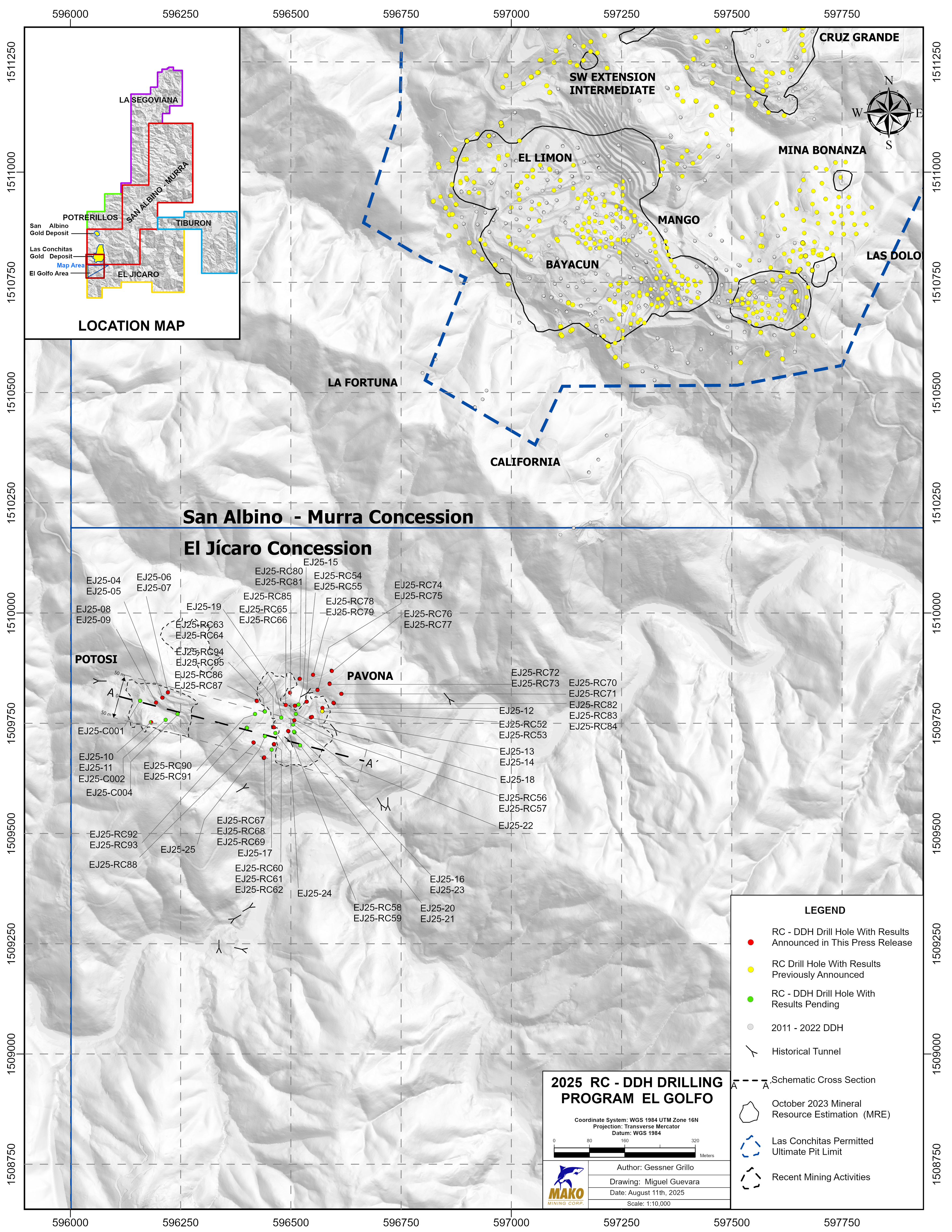
Figure 2. Cross section

Sampling, Assaying, QA/QC and Data Verification
Drill core was continuously sampled from inception to termination of the entire drill hole. Sample intervals were typically one meter. Drill core diameter was HQ (6.35 centimeters). Geologic and geotechnical data was captured into a digital database, core was photographed, then one-half split of the core was collected for analysis and one-half was retained in the core library. Drill core samples were kept in a secured logging and storage facility until such time that they were delivered to the Managua facilities of Bureau Veritas and pulps were sent to the Bureau Veritas laboratory in Vancouver for analysis. All reverse circulation (RC) holes were drilled dry i.e above the water table and no water or other fluids were injected into the hole. RC drill samples were collected every 1 meter using a center-return hammer and samples were obtained from a Gilson chip splitter which is cleaned using compressed air after each sample. Samples were bagged and labeled at the drill site under a geologist's supervision and are logged on site by a geologist who visually selects potential mineralized intervals for fire assay. The mineralized interval(s) including 3-5 samples above and below, the selected interval are continuously sampled and shipped to the Bureau Veritas Lab (BV) in Managua, respecting the best chain of custody practices. Pulps are sent by Bureau Veritas to their laboratory in Vancouver under their chain of custody for analysis. Gold was analyzed by standard fire assay fusion, 30 gr aliquot, AAS finish. Samples returning over 10.0 g/t gold are analyzed utilizing standard Fire Assay-Gravimetric method. The Company follows industry standards in its QA&QC procedures. Control samples consisting of duplicates, standards and blanks were inserted into the sample stream at a minimum ratio of 1 control sample per every 10 samples. Analytical results of control samples confirmed reliability of the assay data.
Qualified Person
Brian Ray, M.Sc., P.Geo, a geologist and qualified person (as defined under NI 43-101) has read and approved the technical information contained in this press release. Mr. Ray is a consultant to the Company.
On behalf of the Board,
Akiba Leisman
Chief Executive Officer
About Mako
Mako Mining Corp. is a publicly listed gold mining, development and exploration company. The Company operates the high-grade San Albino gold mine in Nueva Segovia, Nicaragua, which ranks as one of the highest-grade open pit gold mines globally. Mako's primary objective is to operate San Albino profitably and fund exploration of prospective targets on its district-scale land package.
For further information: Mako Mining Corp., Akiba Leisman, Chief Executive Officer, E-mail: aleisman@makominingcorp.com, phone: (917) 558-5289 or visit our website at www.makominingcorp.com and SEDARPLUS www.sedarplus.ca.
Forward-Looking Information: Some of the statements contained herein may be considered "forward-looking information" within the meaning of applicable securities laws. Forward-looking information can be identified by words such as, without limitation, "estimate", "project", "believe", "anticipate", "intend", "expect", "plan", "predict", "may" or "should" or variations thereon or comparable terminology. The forward-looking information contained herein reflects the Company's current beliefs and expectations, based on management's reasonable assumptions, and includes, without limitation, that the Company high-grade production will generate significant cash flows for the foreseeable future. Mako's primary objective to operate San Albino profitably and fund exploration of prospective targets on its district-scale land package. Such forward-looking information is subject to a variety of risks and uncertainties which could cause actual events or results to differ materially from those reflected in the forward-looking information, including, without limitation, changes in the Company's exploration and development plans and growth parameters and its ability to fund its growth to reach its expected new production numbers; unanticipated costs; the October 24 measures having impacts on business operations not current expected, or new sanctions being imposed by the U.S. Treasury Department or other government entity in Nicaragua in the future; and other risks and uncertainties as disclosed in the Company's public disclosure filings on SEDAR at www.sedarplus.ca. Such information contained herein represents management's best judgment as of the date hereof, based on information currently available. Mako does not undertake to update any forward-looking information, except in accordance with applicable securities laws.
Neither the TSX Venture Exchange nor its Regulation Services Provider (as that term is defined in the policies of the TSX Venture Exchange) accepts responsibility for the adequacy or accuracy of this release.
SOURCE: Mako Mining Corp.
View the original press release on ACCESS Newswire:
https://www.accessnewswire.com/newsroom/en/metals-and-mining/mako-mining-intersects-27.86-g%2ft-au-over-4.1-m-estimated-true-width-at-20-m-below-1061000
